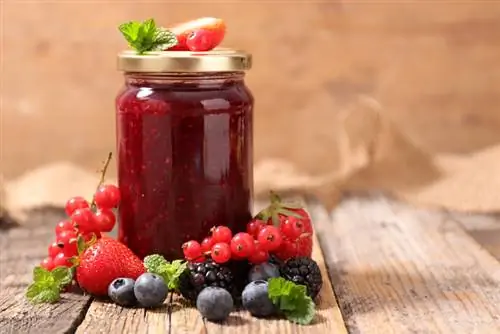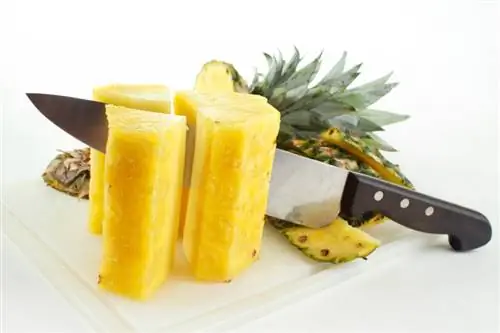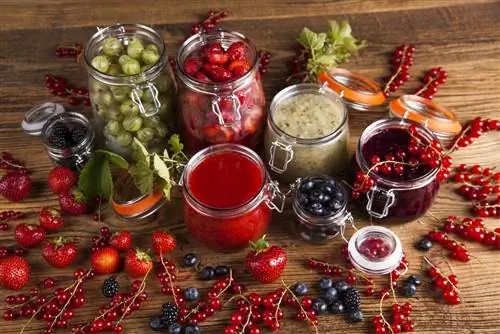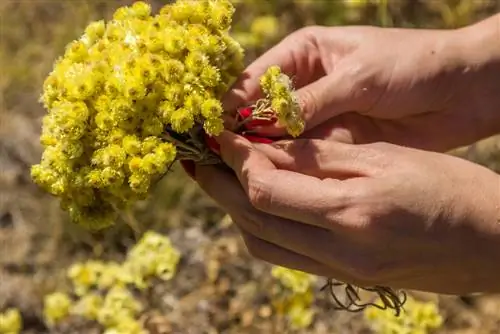- Author admin [email protected].
- Public 2023-12-25 17:45.
- Last modified 2025-01-23 11:21.
Despite the not exactly mid-summer weather in many regions, the current gardening year is bringing abundant yields. If you look a little more carefully at the relevant gardening blogs or in hobby gardeners' Facebook groups with many members, you can sometimes feel a little jealous. Especially for those who have to cover their fruit and vegetable needs exclusively from the supermarket selection, which can sometimes be quite far away, far away from regional production.
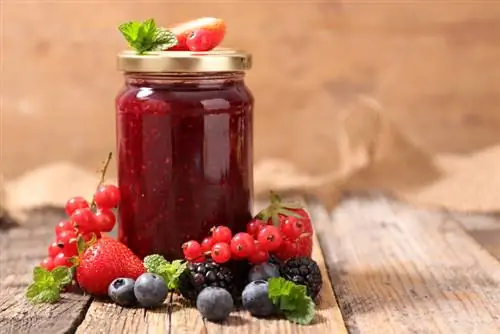
How do you preserve fruit by canning?
When preserving fruit, fruits are heated and preserved in jars. The preserving times and temperatures vary: berries (20-30 minutes, 80°C), stone fruit (25-30 minutes, 80°C), pome fruit (30-40 minutes, 90°C). Fresh, undamaged fruit and clean jars are crucial for successful canning.
Purchasing the rich harvest from the garden for winter precautions is not only worthwhile because of the excellent freshness, but also from a financial perspective. And if your freezer is already full, simply do what Rudolph Rempel registered as a patent at the end of the 19th century and Johann Weck developed further for mass use - preserving. However, preserving in a glass jar has a decisive advantage over other preservation methods Disadvantage: Heating to over 100° C, unlike pasteurization (short-term heating at max.74° C) that vitamins and aromatic substances are partially killed, the nutrient content drops and the appearance and taste suffer from the heat.
Cooking times for common types of fruit and vegetables
The following numbers are guideline values that can be reduced by pre-cooking (10 -15 minutes or 20 - 30 minutes for fruit or vegetables).
| Preserving time in minutes | Preserving temperature in °C | |
|---|---|---|
| Berry fruit | 20 to 30 | 80 |
| stone fruit | 25 to 30 | 80 |
| Pome fruit | 30 to 40 | 90 |
| Beans and peas | 120 | 98 |
| Cauliflower and kohlrabi | 90 | 98 |
| Tomatoes | 20 to 30 | 98 |
| Root vegetables | 60 to 90 | 98 |
| Mushrooms | 60 | 98 |
What needs to be taken into account when preserving food
- Only process freshly harvested, undamaged fruit and vegetables;
- Maintain absolute cleanliness of the jars, lids and preserving vessels;
- Fill the glasses up to two centimeters below the rim, then fill with liquid;
- After boiling, allow the jars to cool slowly and then store them in the cellar in a cool place, protected from light and in a dry place;
- Check canned food regularly for mold formation and discard if necessary;
- Use opened jars as soon as possible

